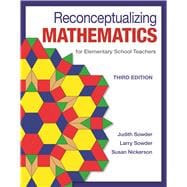Preparing you to teach mathematics by modeling content after how your future students will learn, Reconceptualizing Mathematics provides you with student-centered practice through tasks and activities alongside instruction for facilitating productive classroom discussion.









